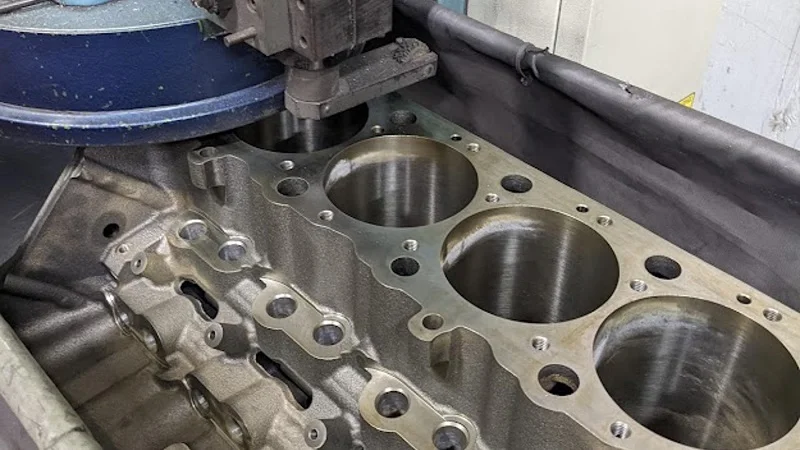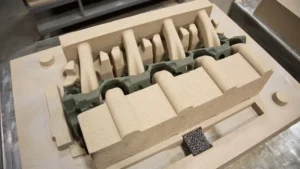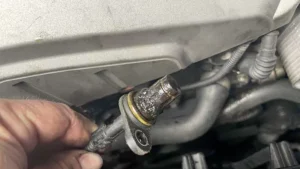The engine block forms the backbone of a vehicle’s engine, providing a sturdy framework that houses and supports its essential components. From pistons and cylinders to the crankshaft and camshaft, every part relies on the block for alignment, stability, and smooth operation. Understanding the structure and function of an engine block is crucial for mechanics, car enthusiasts, and anyone interested in how modern engines generate power efficiently. In this guide, we will explore the key components of an engine block and explain the role each plays in ensuring optimal engine performance.

What Is an Engine Block?
At its core, an engine block is a robust, heavy metal structure, usually made from cast iron or aluminum. It forms the main framework of an internal combustion engine and supports other essential components, such as the cylinder head, pistons, crankshaft, and camshaft. The design of the engine block must withstand high temperatures, extreme pressures, and the dynamic forces generated during combustion.
The primary role of an engine block is structural: it keeps all moving parts aligned and ensures that the engine operates smoothly. Additionally, it provides passages for coolant and lubricating oil, ensuring proper thermal management and reducing friction between moving parts.
Main Components of an Engine Block

1. Cylinders
Cylinders are hollow, cylindrical spaces within the engine block where pistons move up and down. Each cylinder forms a combustion chamber when paired with the cylinder head. The number of cylinders can vary from three to twelve or more, depending on the engine type. Engines with more cylinders generally provide smoother power delivery and higher performance, while fewer cylinders can improve fuel efficiency.
Cylinders must be precisely machined to maintain a tight fit with the pistons. Any deviation can lead to reduced compression, oil leakage, or excessive wear. Some modern engines use liners or sleeves inside the cylinders, allowing for easier replacement and improved durability.
2. Pistons and Piston Rings
Although technically separate from the block itself, pistons interact directly with the cylinder walls. Pistons move up and down inside the cylinders, converting the energy from combustion into mechanical motion. Piston rings, located on the outer surface of pistons, form a seal against the cylinder wall to maintain compression and control oil consumption.
The engine block supports the pistons through precise cylinder bore dimensions and ensures the pistons’ smooth motion. Without a solid and well-machined block, piston performance would be compromised, leading to reduced engine efficiency.
3. Crankshaft and Crankcase
The crankshaft is housed in the lower portion of the engine block, often called the crankcase. This component transforms the pistons’ linear motion into rotational motion, which ultimately drives the vehicle’s wheels. Main bearings secure the crankshaft within the block, allowing it to rotate freely while handling the high forces generated during combustion.
The crankcase is an integral part of the engine block. It provides structural support to the crankshaft and helps distribute lubricating oil. Many engine blocks also feature oil galleries—internal channels that deliver oil directly to the bearings, camshaft, and other moving parts.
4. Camshaft and Timing Components
In engines with an overhead camshaft design, the camshaft may be housed within the block. The camshaft controls the opening and closing of the intake and exhaust valves, coordinating the flow of air and fuel into the cylinders and the expulsion of exhaust gases.
Timing chains or belts link the camshaft to the crankshaft, ensuring precise timing. The engine block provides alignment and support for these components. Proper alignment is critical, as even slight deviations can cause inefficient combustion, reduced performance, or engine damage.
5. Cylinder Head Mounting Surface
The top of the engine block provides a flat surface where the cylinder head is attached. This surface must be perfectly machined to ensure a tight seal with the head gasket, which prevents coolant and oil from leaking into the combustion chambers.
The cylinder head contains additional components such as valves, spark plugs, and fuel injectors. The engine block and cylinder head must work together seamlessly, as any misalignment can result in poor engine performance or catastrophic failure.
6. Coolant Passages
Modern engines rely heavily on liquid cooling systems. The engine block incorporates internal passages or galleries that allow coolant to circulate around the cylinders. This circulation removes excess heat generated during combustion, preventing the engine from overheating.
Proper coolant flow is critical, as uneven cooling can lead to hot spots. Over time, engine blocks can develop deposits or corrosion that restrict coolant flow, making maintenance and periodic flushing essential.
7. Oil Passages
Just like coolant passages, oil galleries are channels inside the engine block that supply lubricating oil to bearings, pistons, and other moving parts. Lubrication reduces friction, minimizes wear, and helps dissipate heat from high-friction areas.
Oil passages are strategically designed to reach every critical component. Any blockage or leak can cause serious engine damage, including bearing failure or piston seizure.
8. Engine Mounting Points
The engine block also includes structural points where the engine is secured to the vehicle chassis. These mounting points absorb vibrations and help maintain stability during operation. High-performance engines often feature reinforced mounting points to handle increased power and torque.
9. Freeze Plugs
Freeze plugs, also known as expansion plugs, are small metal caps installed in the engine block. They serve two main purposes: sealing the block during manufacturing and providing a safety mechanism if the coolant freezes. Expansion of frozen coolant can crack the block, but freeze plugs are designed to pop out under pressure, reducing potential damage.
Main Components of an Engine Block
Engine blocks are not one-size-fits-all. Various materials and designs exist to suit different performance and manufacturing requirements.
1. Cast Iron Engine Blocks
Cast iron is a traditional material used in engine blocks. It offers excellent strength, wear resistance, and cost-effectiveness. Cast iron blocks are heavier than aluminum, but their durability makes them ideal for trucks, industrial engines, and high-mileage vehicles.
2. Aluminum Engine Blocks
Aluminum blocks are lighter than cast iron, which improves fuel efficiency and vehicle handling. However, aluminum is less rigid, requiring reinforced designs or liners to maintain durability. Many modern passenger vehicles use aluminum blocks to balance performance, efficiency, and weight.
3. Modular or Monoblock Designs
Some engines feature modular designs where the block is a single, solid piece, while others use removable sections like cylinder liners. Monoblock designs reduce manufacturing complexity and improve strength but can make repairs more challenging.
Common Engine Block Issues
Even the most robust engine blocks can experience problems over time. Some common issues include:
- Cracks and Warping: Overheating or physical stress can lead to cracks, which may cause coolant or oil leaks.
- Corrosion: Water or coolant with improper additives can corrode the block, reducing efficiency and structural integrity.
- Worn Cylinder Walls: High mileage engines may experience cylinder wall wear, affecting compression and piston performance.
- Oil and Coolant Leaks: Faulty gaskets, seals, or freeze plugs can cause leaks that compromise engine function.
Regular maintenance, including proper oil changes, coolant checks, and inspections, can extend the life of an engine block and prevent costly repairs.
Conclusion
The engine block is a cornerstone of automotive engineering. It not only provides structural support for pistons, crankshafts, camshafts, and other essential components but also incorporates vital systems for lubrication, cooling, and alignment. Understanding its parts and functions helps enthusiasts, mechanics, and automotive engineers appreciate the intricacies of engine operation.
From cylinders and pistons to oil passages and freeze plugs, each element of the engine block contributes to the overall efficiency, durability, and performance of a vehicle. Whether working on high-performance sports cars or reliable everyday vehicles, knowledge of engine block components is indispensable for maintaining optimal engine health and longevity.
By ensuring proper maintenance and understanding the inner workings of the engine block, drivers and mechanics can enhance vehicle performance, prevent premature failures, and enjoy the long-lasting benefits of a well-engineered engine.



